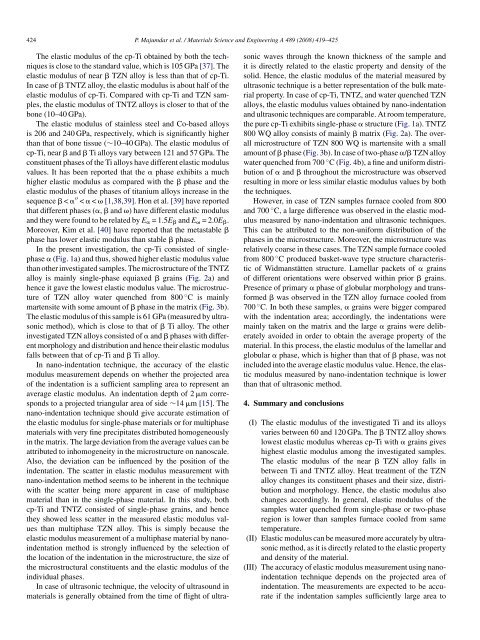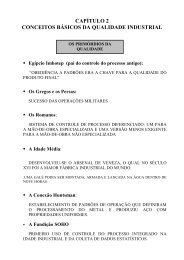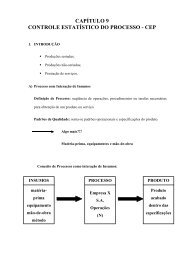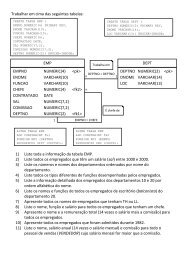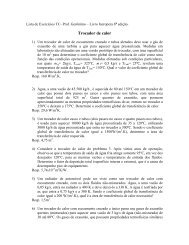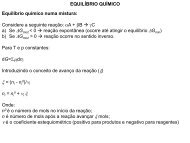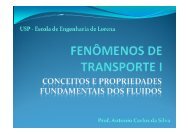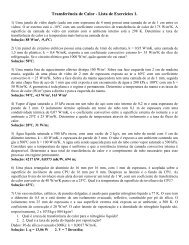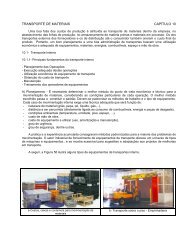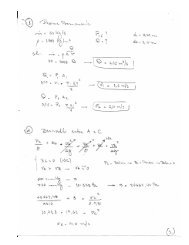Elastic modulus of biomedical titanium alloys by nano ... - Sistemas
Elastic modulus of biomedical titanium alloys by nano ... - Sistemas
Elastic modulus of biomedical titanium alloys by nano ... - Sistemas
You also want an ePaper? Increase the reach of your titles
YUMPU automatically turns print PDFs into web optimized ePapers that Google loves.
424 P. Majumdar et al. / Materials Science and Engineering A 489 (2008) 419–425The elastic <strong>modulus</strong> <strong>of</strong> the cp-Ti obtained <strong>by</strong> both the techniquesis close to the standard value, which is 105 GPa [37]. Theelastic <strong>modulus</strong> <strong>of</strong> near TZN alloy is less than that <strong>of</strong> cp-Ti.In case <strong>of</strong> TNTZ alloy, the elastic <strong>modulus</strong> is about half <strong>of</strong> theelastic <strong>modulus</strong> <strong>of</strong> cp-Ti. Compared with cp-Ti and TZN samples,the elastic <strong>modulus</strong> <strong>of</strong> TNTZ <strong>alloys</strong> is closer to that <strong>of</strong> thebone (10–40 GPa).The elastic <strong>modulus</strong> <strong>of</strong> stainless steel and Co-based <strong>alloys</strong>is 206 and 240 GPa, respectively, which is significantly higherthan that <strong>of</strong> bone tissue (∼10–40 GPa). The elastic <strong>modulus</strong> <strong>of</strong>cp-Ti, near and Ti <strong>alloys</strong> vary between 121 and 57 GPa. Theconstituent phases <strong>of</strong> the Ti <strong>alloys</strong> have different elastic <strong>modulus</strong>values. It has been reported that the phase exhibits a muchhigher elastic <strong>modulus</strong> as compared with the phase and theelastic <strong>modulus</strong> <strong>of</strong> the phases <strong>of</strong> <strong>titanium</strong> <strong>alloys</strong> increase in thesequence < ′′ < < [1,38,39]. Hon et al. [39] have reportedthat different phases (, and ) have different elastic <strong>modulus</strong>and they were found to be related <strong>by</strong> E = 1.5E and E = 2.0E .Moreover, Kim et al. [40] have reported that the metastable phase has lower elastic <strong>modulus</strong> than stable phase.In the present investigation, the cp-Ti consisted <strong>of</strong> singlephase (Fig. 1a) and thus, showed higher elastic <strong>modulus</strong> valuethan other investigated samples. The microstructure <strong>of</strong> the TNTZalloy is mainly single-phase equiaxed grains (Fig. 2a) andhence it gave the lowest elastic <strong>modulus</strong> value. The microstructure<strong>of</strong> TZN alloy water quenched from 800 ◦ C is mainlymartensite with some amount <strong>of</strong> phase in the matrix (Fig. 3b).The elastic <strong>modulus</strong> <strong>of</strong> this sample is 61 GPa (measured <strong>by</strong> ultrasonicmethod), which is close to that <strong>of</strong> Ti alloy. The otherinvestigated TZN <strong>alloys</strong> consisted <strong>of</strong> and phases with differentmorphology and distribution and hence their elastic <strong>modulus</strong>falls between that <strong>of</strong> cp-Ti and Ti alloy.In <strong>nano</strong>-indentation technique, the accuracy <strong>of</strong> the elastic<strong>modulus</strong> measurement depends on whether the projected area<strong>of</strong> the indentation is a sufficient sampling area to represent anaverage elastic <strong>modulus</strong>. An indentation depth <strong>of</strong> 2 m correspondsto a projected triangular area <strong>of</strong> side ∼14 m [15]. The<strong>nano</strong>-indentation technique should give accurate estimation <strong>of</strong>the elastic <strong>modulus</strong> for single-phase materials or for multiphasematerials with very fine precipitates distributed homogeneouslyin the matrix. The large deviation from the average values can beattributed to inhomogeneity in the microstructure on <strong>nano</strong>scale.Also, the deviation can be influenced <strong>by</strong> the position <strong>of</strong> theindentation. The scatter in elastic <strong>modulus</strong> measurement with<strong>nano</strong>-indentation method seems to be inherent in the techniquewith the scatter being more apparent in case <strong>of</strong> multiphasematerial than in the single-phase material. In this study, bothcp-Ti and TNTZ consisted <strong>of</strong> single-phase grains, and hencethey showed less scatter in the measured elastic <strong>modulus</strong> valuesthan multiphase TZN alloy. This is simply because theelastic <strong>modulus</strong> measurement <strong>of</strong> a multiphase material <strong>by</strong> <strong>nano</strong>indentationmethod is strongly influenced <strong>by</strong> the selection <strong>of</strong>the location <strong>of</strong> the indentation in the microstructure, the size <strong>of</strong>the microstructural constituents and the elastic <strong>modulus</strong> <strong>of</strong> theindividual phases.In case <strong>of</strong> ultrasonic technique, the velocity <strong>of</strong> ultrasound inmaterials is generally obtained from the time <strong>of</strong> flight <strong>of</strong> ultrasonicwaves through the known thickness <strong>of</strong> the sample andit is directly related to the elastic property and density <strong>of</strong> thesolid. Hence, the elastic <strong>modulus</strong> <strong>of</strong> the material measured <strong>by</strong>ultrasonic technique is a better representation <strong>of</strong> the bulk materialproperty. In case <strong>of</strong> cp-Ti, TNTZ, and water quenched TZN<strong>alloys</strong>, the elastic <strong>modulus</strong> values obtained <strong>by</strong> <strong>nano</strong>-indentationand ultrasonic techniques are comparable. At room temperature,the pure cp-Ti exhibits single-phase structure (Fig. 1a). TNTZ800 WQ alloy consists <strong>of</strong> mainly matrix (Fig. 2a). The overallmicrostructure <strong>of</strong> TZN 800 WQ is martensite with a smallamount <strong>of</strong> phase (Fig. 3b). In case <strong>of</strong> two-phase / TZN alloywater quenched from 700 ◦ C(Fig. 4b), a fine and uniform distribution<strong>of</strong> and throughout the microstructure was observedresulting in more or less similar elastic <strong>modulus</strong> values <strong>by</strong> boththe techniques.However, in case <strong>of</strong> TZN samples furnace cooled from 800and 700 ◦ C, a large difference was observed in the elastic <strong>modulus</strong>measured <strong>by</strong> <strong>nano</strong>-indentation and ultrasonic techniques.This can be attributed to the non-uniform distribution <strong>of</strong> thephases in the microstructure. Moreover, the microstructure wasrelatively coarse in these cases. The TZN sample furnace cooledfrom 800 ◦ C produced basket-wave type structure characteristic<strong>of</strong> Widmanstätten structure. Lamellar packets <strong>of</strong> grains<strong>of</strong> different orientations were observed within prior grains.Presence <strong>of</strong> primary phase <strong>of</strong> globular morphology and transformed was observed in the TZN alloy furnace cooled from700 ◦ C. In both these samples, grains were bigger comparedwith the indentation area; accordingly, the indentations weremainly taken on the matrix and the large grains were deliberatelyavoided in order to obtain the average property <strong>of</strong> thematerial. In this process, the elastic <strong>modulus</strong> <strong>of</strong> the lamellar andglobular phase, which is higher than that <strong>of</strong> phase, was notincluded into the average elastic <strong>modulus</strong> value. Hence, the elastic<strong>modulus</strong> measured <strong>by</strong> <strong>nano</strong>-indentation technique is lowerthan that <strong>of</strong> ultrasonic method.4. Summary and conclusions(I) The elastic <strong>modulus</strong> <strong>of</strong> the investigated Ti and its <strong>alloys</strong>varies between 60 and 120 GPa. The TNTZ alloy showslowest elastic <strong>modulus</strong> whereas cp-Ti with grains giveshighest elastic <strong>modulus</strong> among the investigated samples.The elastic <strong>modulus</strong> <strong>of</strong> the near TZN alloy falls inbetween Ti and TNTZ alloy. Heat treatment <strong>of</strong> the TZNalloy changes its constituent phases and their size, distributionand morphology. Hence, the elastic <strong>modulus</strong> alsochanges accordingly. In general, elastic <strong>modulus</strong> <strong>of</strong> thesamples water quenched from single-phase or two-phaseregion is lower than samples furnace cooled from sametemperature.(II) <strong>Elastic</strong> <strong>modulus</strong> can be measured more accurately <strong>by</strong> ultrasonicmethod, as it is directly related to the elastic propertyand density <strong>of</strong> the material.(III) The accuracy <strong>of</strong> elastic <strong>modulus</strong> measurement using <strong>nano</strong>indentationtechnique depends on the projected area <strong>of</strong>indentation. The measurements are expected to be accurateif the indentation samples sufficiently large area to


